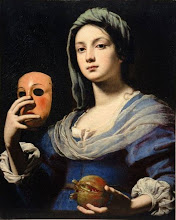Agora, a film by the Spanish director Alejandro Amenabar (The Sea Inside), revolves around the life of Hypatia, the greatest mathematician, scientist and philosopher of her time, played admirably by Rachel Weisz. In her native 4th century AD Alexandria she was much esteemed for her dignity, intellect and virtue. Many of her students, both pagan and Christian, rose to positions of political power, which meant that she was seen as a woman of great influence, putting her into the crosshairs of the power-hungry. Her death, to some historians, marks the end of the Classical Era, although Hellenistic philosophy did survive her for a few hundred years in the Eastern part of the Roman Empire.
The villain of the piece is Cyril, patriarch/pope of Alexandria, a man described, even by Christians of his day as "a monster, born to destroy the church". He persecuted the Jews and other non-Christians of Alexandria, as well as Christians who disagreed with him, and probably incited the mob of zealots who brutally killed and mutilated Hypatia for her refusal to kneel to his power. Historians disagree over the extent of his responsibility for these events, but the Church's own resistance to his canonisation is telling.
Amenabar certainly has an agenda - firstly to warn against the overthrow of reason by ignorance, and secondly to show that so-called Christians have been, at certain times and places, no better than the Taliban. The second part of the message has infuriated certain reviewers allied to the Church. Agendas tend to distort historical accuracy, but the inaccuracies of the film are not as great as commentators, with their own ideological agenda, have made out. For example, some have deplored Agora for apparently blaming Christians for the destruction of the great Royal Library of Alexandria. There were several libraries in the city, and the film deals with the destruction of the library in the Serapeum temple, not the burning of the great library. The Serapeum was destroyed by either a Christian mob or by Roman soldiers, depending on which ancient account one reads. We will probably never know who was responsible for the tragic loss of the more famous library.
I saw the film with my librarian sister, which was quite appropriate.
I saw the film with my librarian sister, which was quite appropriate.
Hypatia as imagined by Raphael




























